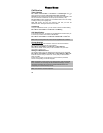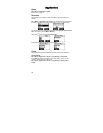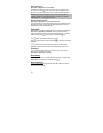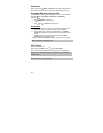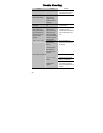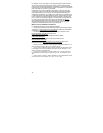40
What is known about cases of human cancer that have been
reported in users of handheld mobile phones?
Some people who have used mobile phones have been diagnosed with brain
cancer. But it is important to understand that this type of cancer also occurs
among people who have not used mobile phones. In fact, brain cancer occurs
in the U.S. population at a rate of about 6 new cases per 100,000 people each
year. At that rate, assuming 80 million users of mobile phones (a number
increasing at a rate of about 1 million per month), about 4800 cases of brain
cancer would be expected each year among those 80 million people, whether
or not they used their phones. Thus it is not possible to tell whether any
individual’s cancer arose because of the phone, or whether it would have
happened anyway. A key question is whether the risk of getting a particular
form of cancer is greater among people who use mobile phones than among
the rest of the population. One way to answer that question is to compare the
usage of mobile phones among people with brain cancer with the use of
mobile phones among appropriately matched people without brain cancer.
This is called a case-control study. The current case-control study of brain
cancers by the National Cancer Institute, as well as the follow-up research to
be sponsored by industry, will begin to generate this type of information.
What is FDA’s role concerning the safety of mobile phones?
Under the law, FDA does not review the safety of radiation-emitting consumer
products such as mobile phones before marketing, as it does with new drugs
or medical devices. However, the agency has authority to take action if mobile
phones are shown to emit radiation at a level that is hazardous to the user. In
such a case, FDA could require the manufacturers of mobile phones to notify
users of the health hazard and to repair, replace or recall the phones so that
the hazard no longer exists.
Although the existing scientific data do not justify FDA regulatory actions at
this time, FDA has urged the mobile phone industry to take a number of steps
to assure public safety. The agency has recommended that the industry:
• support needed research into possible biological effects of RF of the type
emitted by mobile phones;
• design mobile phones in a way that minimizes any RF exposure to the user
that is not necessary for device function; and
• cooperate in providing mobile phone users with the best possible
information on what is known about possible effects of mobile phone use on
human health.
At the same time, FDA belongs to an interagency working group of the federal
agencies that have responsibility for different aspects of mobile phone safety
to ensure a coordinated effort at the federal level. These agencies are:
• National Institute for Occupational Safety and Health
• Environmental Protection Agency
• Federal Communications Commission
• Occupational Health and Safety Administration
• National Telecommunications and Information Administration
• The National Institutes of Health also participates in this group.
In the absence of conclusive information about any possible risk,
what can concerned individuals do?
If there is a risk from these products — and at this point we do not know that
there is — it is probably very small. But if people are concerned about
avoiding even potential risks, there are simple steps they can take to do so.



